Aso UNESCO Global Geopark
Aso is alive.
A journey across time and space, experiencing the land of Aso and the lives of those who live in the Gigantic Caldera.
History of the Land and People's Lives
The Aso caldera is located in the center of Kyushu. The unique topography was created through ongoing volcanic activity that began 270,000 years ago, four massive pyroclastic flow eruptions which occurred around 90,000 years ago, and continued volcanic activity since then. The major themes of the Aso UNESCO Global Geopark are: learning about the history of the Mt. Aso volcanoes, and deepening understanding of the relationship between people's lives and Mt. Aso, that is, how people have lived together with the blessings of the land, and how they have developed a unique culture and landscape there.
What Are Geoparks?
The term "geopark" is used for regions where people scientifically observe the workings of the earth and land—sites with beautiful natural heritage elements that are particularly precious, such as geological strata, rock formations, topography, volcanoes, and faults. The parks serve to conserve these areas, and are places where visitors can think about ecosystems and human life, through natural heritage elements that include various cultures and the lives of the people living in those parks.
Geoparks have spread throughout the world due to the activities of the Global Geoparks Network established in 2004, and in November 2015, geoparks became an official program of UNESCO.
The Relationship between the Land at Mt. Aso and People's Lives
Three Themes for Deepening Understanding
1. Memories of Eruptions Etched into the Giant Caldera
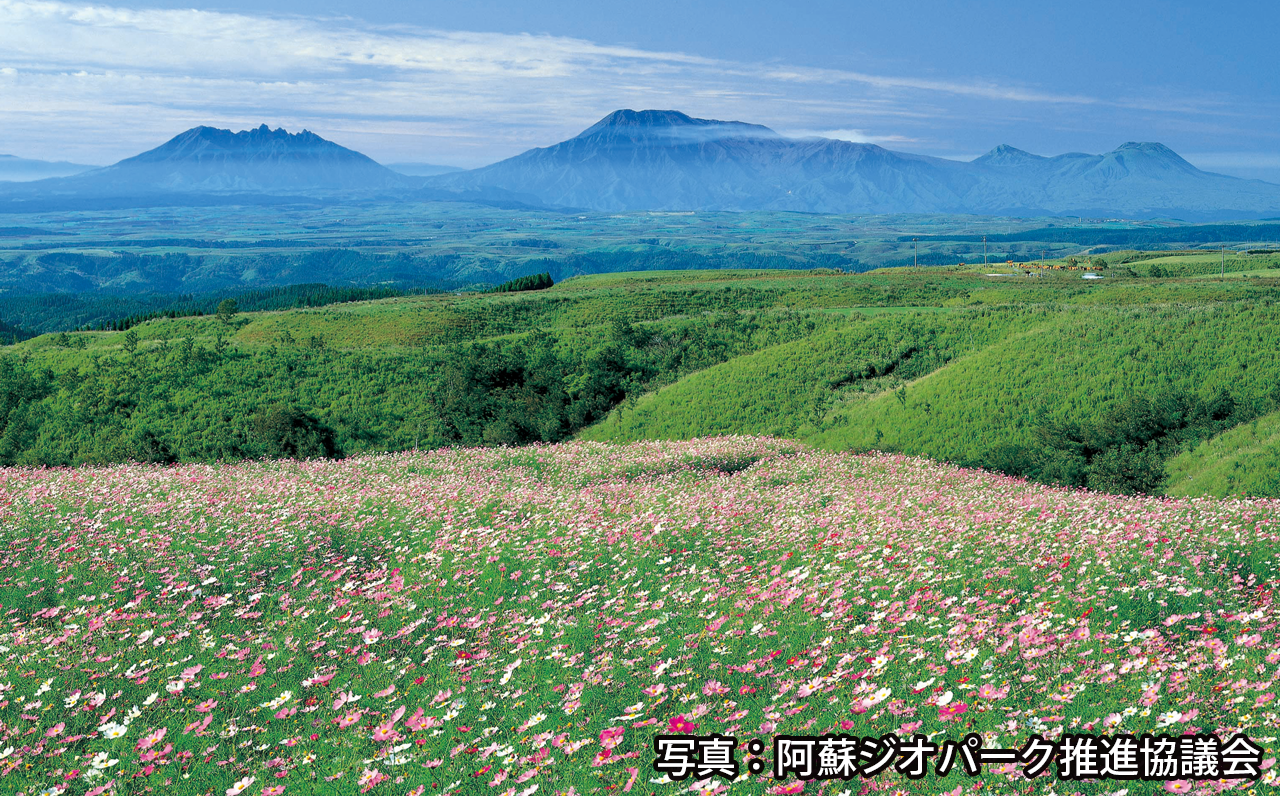
The giant caldera—one of the largest in the world and the symbol of Aso UNESCO Global Geopark—was created by volcanic activity over a few tens of thousands of years. By deepening knowledge about the topography formed by volcanic activity, up to the point when the giant caldera was formed by a large eruption about 90,000 years ago, as well as the effects on each part of the region due to massive eruptions, visitors can gain a sense of a living and breathing earth, beyond human understanding.
2. Nakadake Crater, Where One Can Feel the Earth Breathe
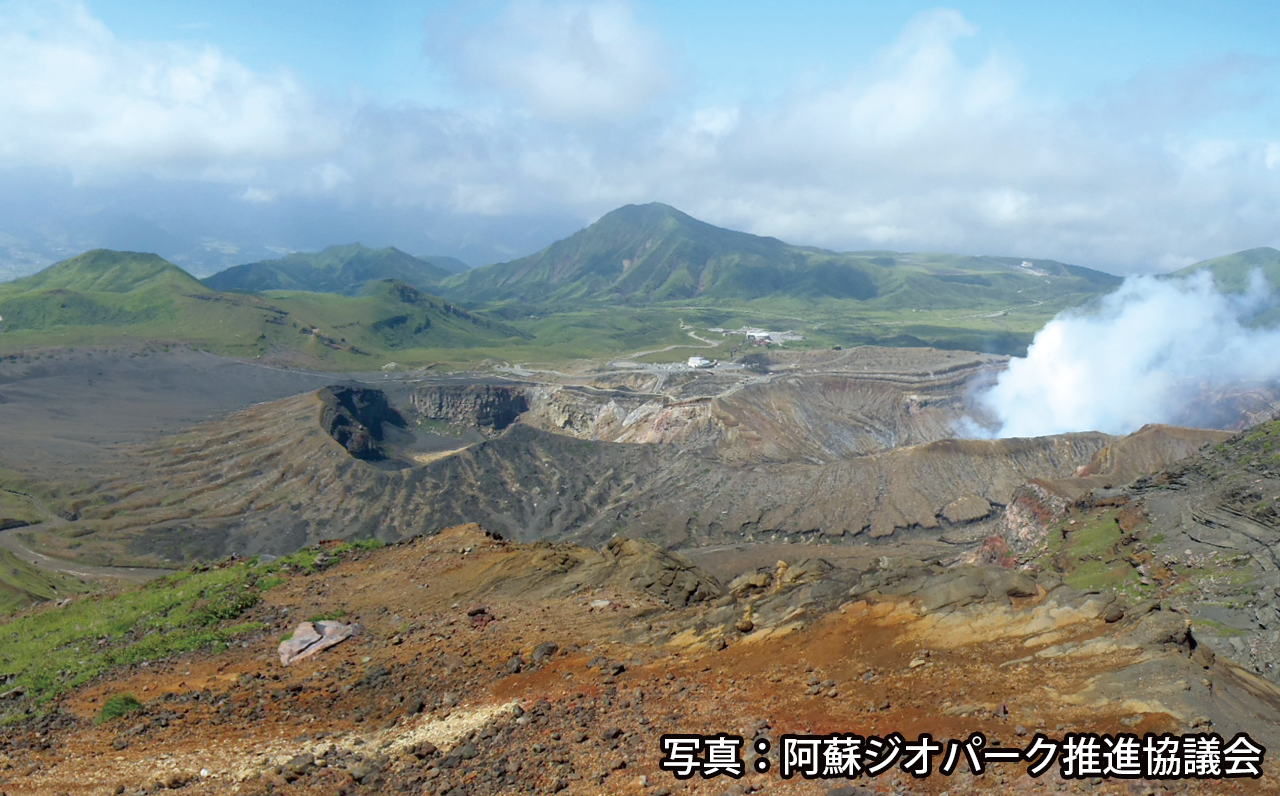
Among the volcanoes in the caldera, the Nakadake Crater, which has repeatedly exhibited vigorous activity throughout history to today, is a geosite representative of Aso. The region around the Nakadake Crater has given rise to unique landscapes and ecosystems, as well as lifestyles of people coexisting with volcanic activity.
3. Blessings of the Volcano and the Daily Lives of People
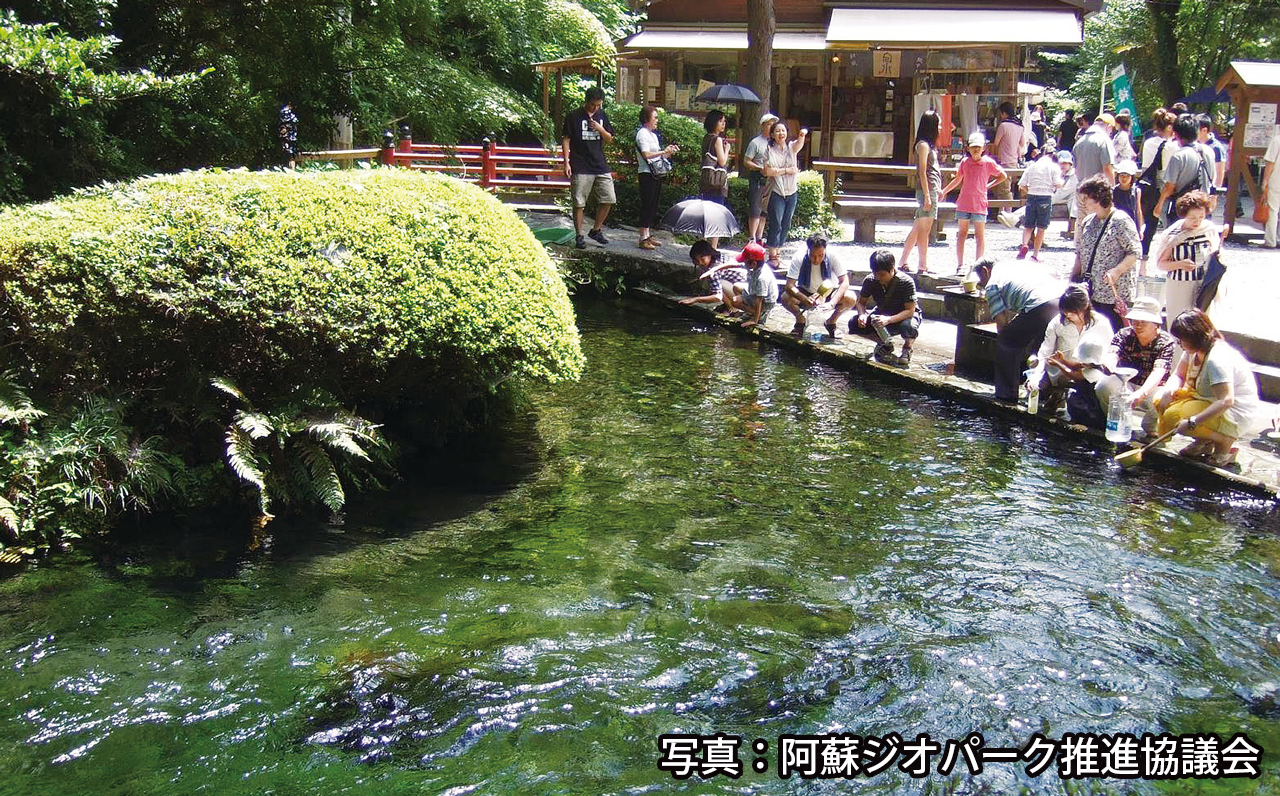
People living near the active volcano have strived to coexist with nature, embracing the volcano's awe-inspiring presence, and developing a unique culture and lifestyle. Nature has provided tremendous blessings to these people such as the springs and hot springs often seen in volcanic zones.
Mt. Kinpo and Mt. Unzendake are located far west of Mt. Aso in an almost linear alignment. Mt. Unzendake and Mt. Kinpo are part of a volcanic group comprising of mainly magma domes, and Mt. Aso is a pyroclastic cone formed from built up volcanic ash, scoria, and lava. Aso and Unzen were both designated as National Parks in 1934, and have enjoyed close connections ever since. Today, both are designated UNESCO Global Geoparks.

Tap to enlarge
Collaboration with UNESCO Global Geoparks Overseas
Hong Kong UNESCO Global Geopark (China)
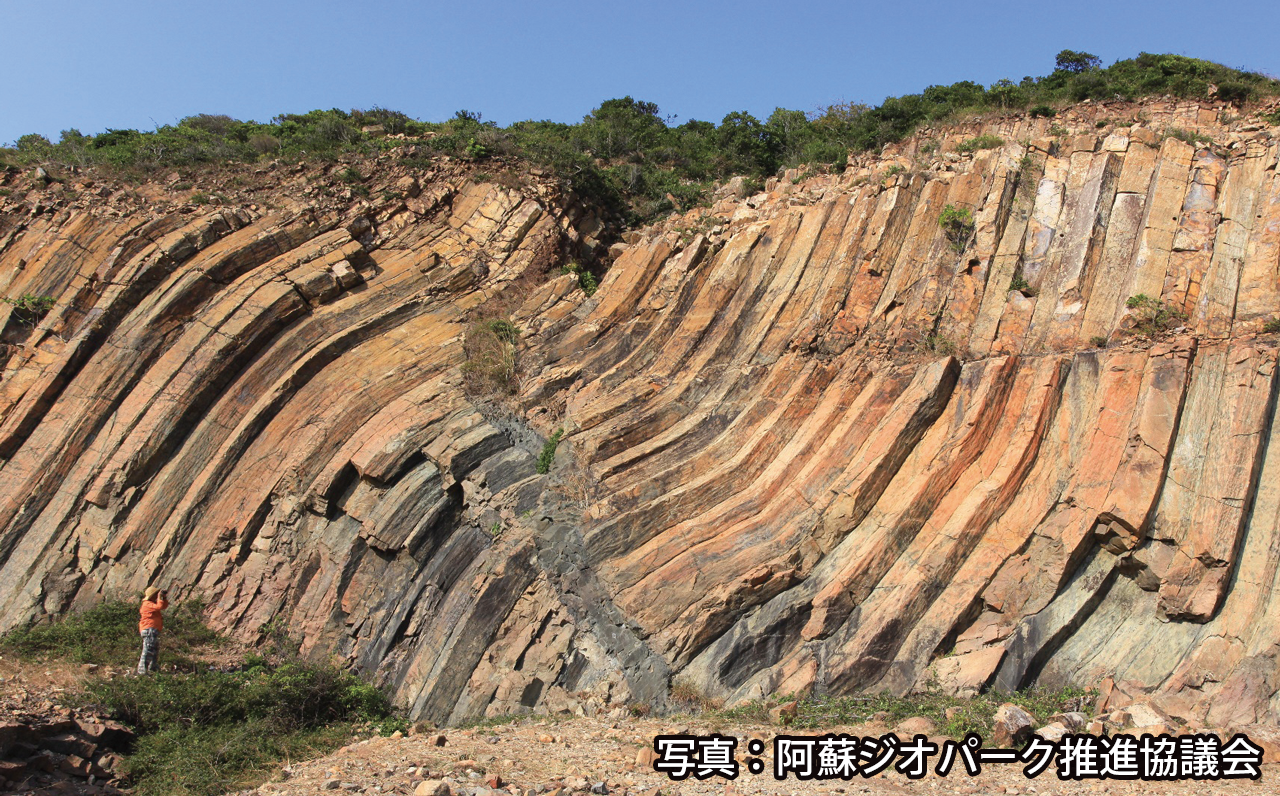
On July 14, 2014, a partnership agreement was concluded with Hong Kong Geopark.
Cheongsong UNESCO Global Geopark (South Korea)
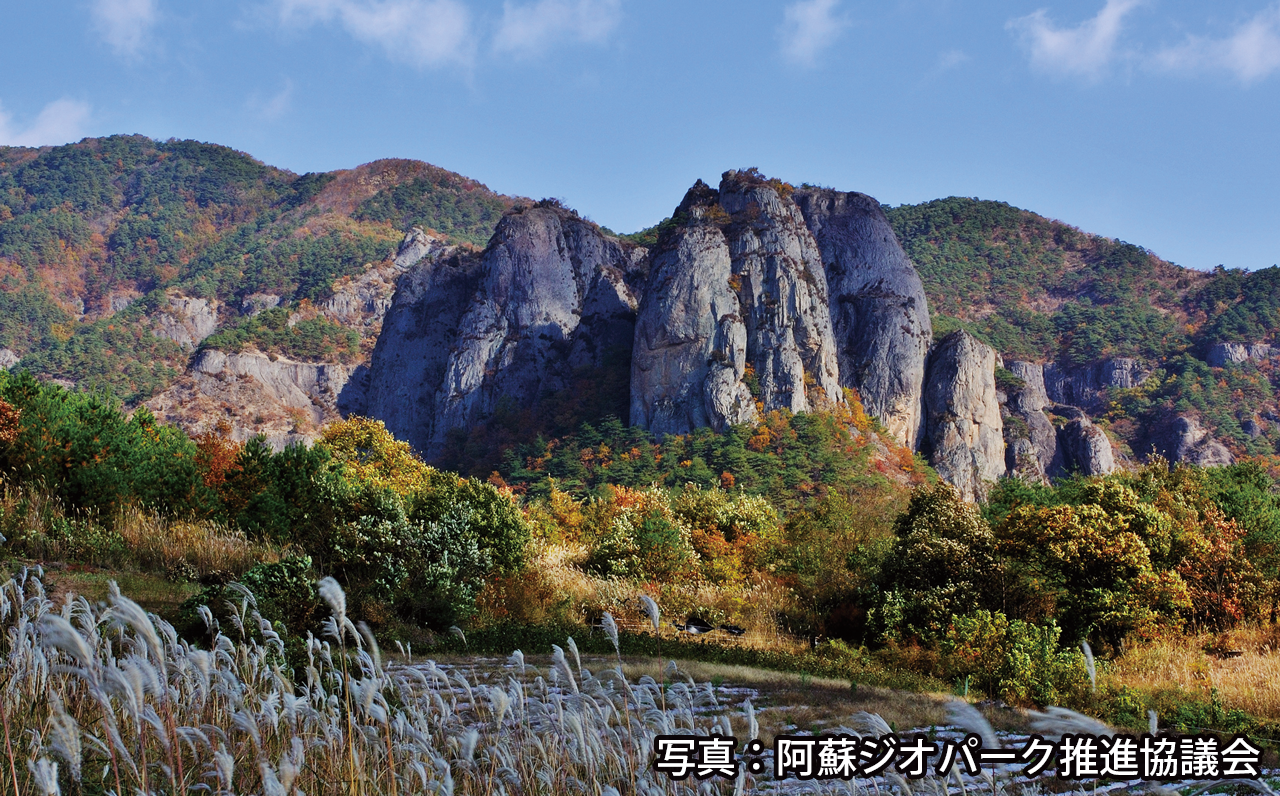
On July 13, 2018, a partnership agreement was concluded with Cheongsong Geopark.
Relationship between Geoparks and National Parks
Since 1934, when the Aso region was designated as a national park, its precious natural environment has been conserved based on the continuous protection and management by the national government. Recognized for its value, Aso was recognized as a member of the Geoparks Network, and has engaged in various activities in collaboration with national parks and other geoparks, such as protection, facility development, education and information dissemination, program development, and cultivation of human resources.

